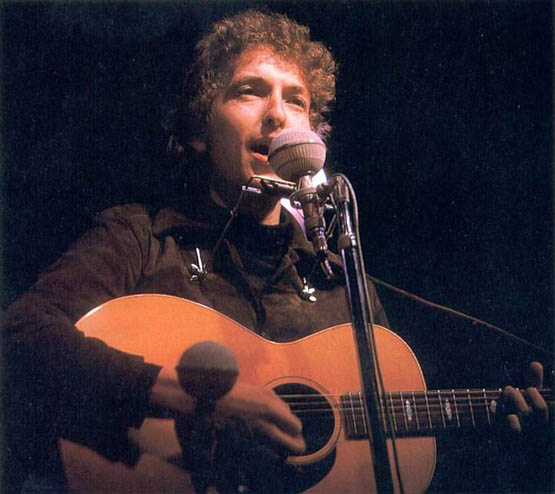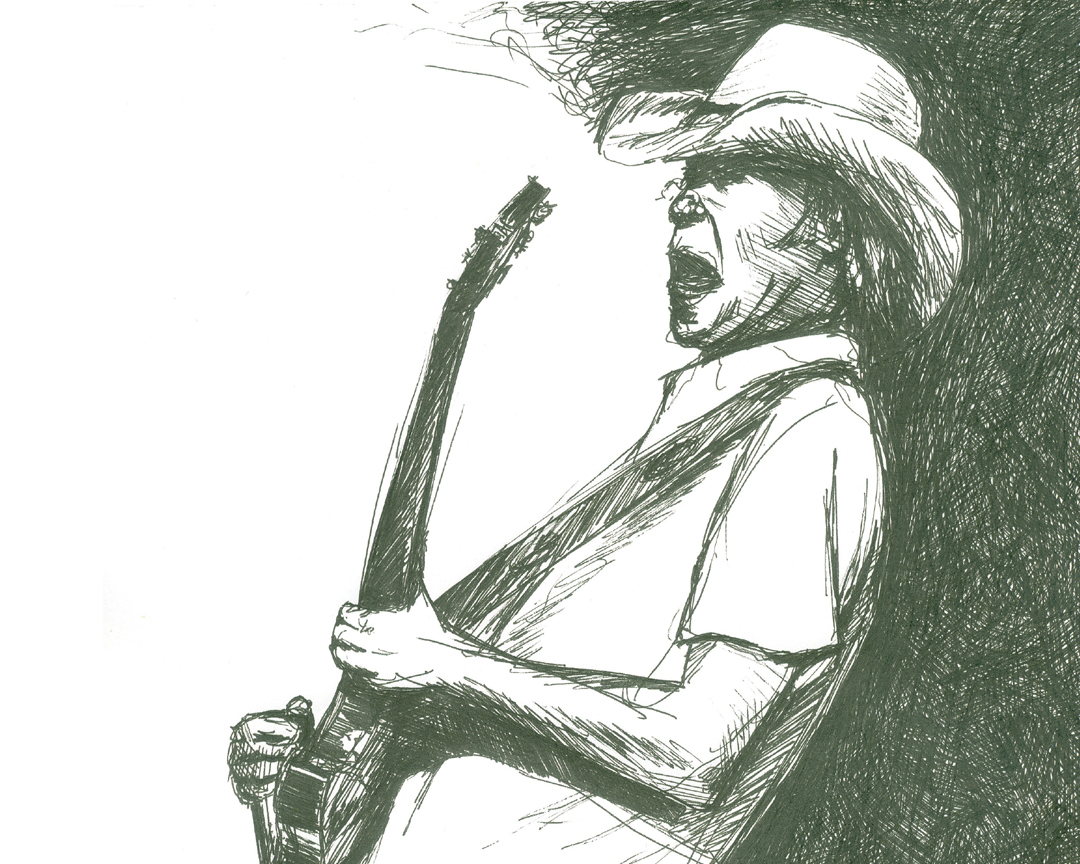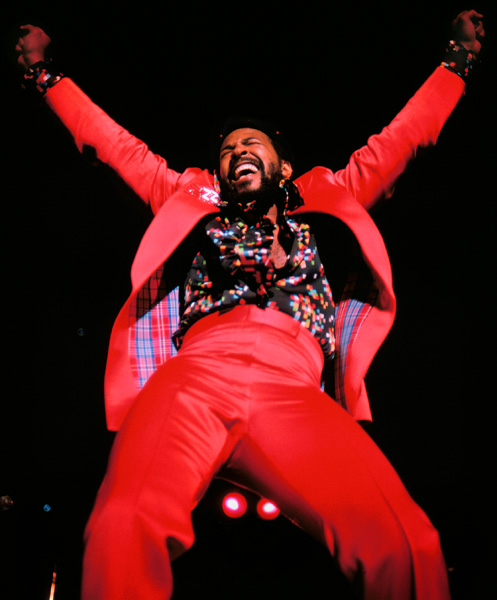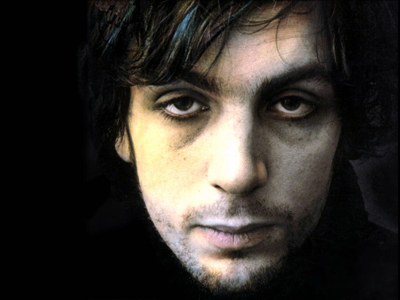Music Review: Bob Dylan - Dylan (3 CD Set); The Other Side Of The Mirror: Bob Dylan Live At The Newport Folk Festival 1963 - 1965 (DVD)


Although there will be no followup to the brilliant Modern Times album this year, Bob Dylan fans have plenty to be excited about in the month of October. With two new releases from Sony Legacy, the enigma that is Dylan is once again re-examined, and on at least one of these releases, some surprising new insights are revealed.
Dylan is the latest attempt to sum up Bob Dylan's remarkable career within the confines of a single release — an impossible task to be sure, even when said release contains multiple discs as this one does.
Interestingly, this is also the second Bob Dylan album to be released with the title of Dylan. The last album bearing that title consisted of outtakes from the Self Portrait album, and was released by Columbia in the early seventies out of what was believed by many to be spite, when Dylan briefly defected to Asylum Records to make the album Planet Waves. Long since out of print, the album is now considered a throwaway by many.

For this year's Dylan, Sony Legacy offers up a career spanning retrospective being released in three versions. One is a single disc compilation, while the other two are three disc editions — one of these being a deluxe boxed set version with the other being packaged in a more modest fold-out digi-pak sleeve.
Boiling the entire career of someone like Bob Dylan down to a compilation, even spread over three discs, is a ridiculous proposition by any stretch — there are just too many great songs to really fit. But far from being merely another album of Dylan's greatest hits, Dylan comes about as close to succeeding as can be reasonably expected. Dylan is also something of an interactive project, as fans were able to have a say in the song selection by voicing their opinions at the dylan07 website.
On the three disc version, Dylan's career is broken down into three distinct periods. Disc one covers the years 1962-1967 and the albums from his debut through John Wesley Harding. Disc two covers The Basement Tapes through 1985's Empire Burlesque, while the third disc goes from 1986's Knocked Out Loaded up to last year's Modern Times.

While hardcore Dylan fans will probably most appreciate the first two discs, it is the third that offers up the most surprises. Covering Dylan's eighties work on albums like Under A Red Sky and Down In The Groove — a period many dismiss as a low point in Dylan's career — the return visit offered here reveals that Dylan actually did some great, if under-appreciated work during this period. A second listen to "Brownsville Girl" from Knocked Out Loaded for example, reveals a rather gorgeous tune with a great gospel arrangement. Likewise, "Silvio," from Down In The Groove offers a more uptempo read on Dylan's flirtation with the gospel sound. Three songs from the criminally under-appreciated Oh, Mercy are also offered here, including the only outtake on the set, "Dignity." Disc three closes out with selections from Dylan's "comeback" — the three critically lauded albums from this decade, Time Out Of Mind, Love & Theft, and Modern Times.
Dylan's "middle period" on the second disc mainly covers the years after he first went "electric," up through the commercial peak of the seventies on albums like his masterpiece Blood On The Tracks. This is where you get Dylan's later hits from "Lay Lady Lay" to "Knockin' On Heaven's Door" to "Tangled Up In Blue."
 The infamous "born-again" years of albums like Slow Train Coming and Shot Of Love get the same treatment, although the most gospel influenced album of the so-called "Jesus trilogy," Saved, is mysteriously absent from this collection. From one of Dylan's most overlooked albums, Street Legal, we also get one of the most underrated songs of his entire career (at least in my opinion), in the form of "Changing Of The Guard."
The infamous "born-again" years of albums like Slow Train Coming and Shot Of Love get the same treatment, although the most gospel influenced album of the so-called "Jesus trilogy," Saved, is mysteriously absent from this collection. From one of Dylan's most overlooked albums, Street Legal, we also get one of the most underrated songs of his entire career (at least in my opinion), in the form of "Changing Of The Guard."Dylan's early years as the great new white hope of the folk music tradition is the focus of disc one on the Dylan set. This of course entails that period when Dylan was the darling of the old guard of the lefty folk generation, before he basically blew that all to smithereens with his electric set at the 1965 Newport Folk Festival (a subject explored in greater detail on the other new Dylan release coming out this month). All of Dylan's early folk gems are here, including the likes of "Masters Of War," "A Hard Rains Gonna Fall," "Blowin In The Wind," and of course, "The Times They Are A Changing."

Disc one closes out as Dylan is shifting gears from folk to rock on his early masterpieces Highway 61 Revisited and Blonde On Blonde, and his early breakthrough hits like "Positively 4th Street," "Maggies Farm," and the all-time classic "Like A Rolling Stone."
On the three-disc version, Dylan also contains a full color booklet with liner notes written by the respected critic Bill Flanagan. As a career overview, the three disc version of Dylan is a rather quick sumnation of a remarkable career. It misses some spots (Saved is a glaring omission in my own opinion), but for the most part succeeds in its given task of boiling the career of an icon down to its three discs. For the diehards, its a nice way of narrowing the essential tracks down to a single set. For new fans, its probably as good an introduction as you could ask for. Dylan will be out in stores this Tuesday October 2.
However, it is the other Dylan release coming out later in October that should get hardcore Dylan fans the most excited. Dylan's legendary 1965 performance at the Newport Folk Festival has of course been covered on film before — most notably as a crucial part of the Martin Scorsese Dylan documentary No Direction Home. But this performance has never before been aired in its entirety within the format of a straight concert film.
 The Other Side Of The Mirror captures not only the entire 1965 Newport performance on DVD, but those of 1963 and 1964 as well. This is truly fascinating stuff that tells an equally riveting story. By simply showing the three Dylan Newport performances in their chronological order, filmmaker Murray Lerner (whose credits also include films on subjects ranging from Issac Stern to Jimi Hendrix) spins the sort of tale even a Hollywood script writer couldn't have come up with.
The Other Side Of The Mirror captures not only the entire 1965 Newport performance on DVD, but those of 1963 and 1964 as well. This is truly fascinating stuff that tells an equally riveting story. By simply showing the three Dylan Newport performances in their chronological order, filmmaker Murray Lerner (whose credits also include films on subjects ranging from Issac Stern to Jimi Hendrix) spins the sort of tale even a Hollywood script writer couldn't have come up with.The Newport story has of course already been the subject of endless analysis and re-examination. It has basically been dissected to death by all manner of critics and music historians. But by simply presenting these performances exactly as they unfolded, we are finally able to get a first hand look at how Dylan went from near messiah status within the folk community to their own personal Judas. Nothing is offered up here in the way of an opinion — the events are simply shown as they happened, and the viewer is left to draw their own conclusions.
Dylan first arrives at the 1963 festival as folk music's newly appointed heir to pass the message of love, peace, and political activism on to a newer, younger generation. During an afternoon workshop performance, he sings parts of "All I Really Want To Do" in the sort of youthful, high yodel that is hard to imagine now. Its equally strange to watch an almost naive young Dylan seated on a gazebo style stage (that really looks more like a porch), with people like Clarence Ashley seated behind him holding banjos and such. You almost start to wonder when Grandma will be serving up the lemonade.
What is clear is that everybody loves this guy, and Dylan himself is clearly elated by the acceptance, joking and grinning throughout the performances. Joan Baez even gets into the comedy act by doing a spot-on impersonation of "Bobby Dylan doing Joan Baez" on the song "Mary Hamilton."

At one point when folk icon Pete Seeger introduces Dylan, he is beaming almost like a proud father. He would later notoriously attempt to unplug Dylan during the spectacle just two years later when he went electric.
But the love affair first must continue, which it does at Dylan's 1964 Newport performance. Dylan grins from ear to ear here throughout a particularly intense and riveting performance of the song "Chimes Of Freedom." The crowd is so enraptured that when the song ends and Peter Yarrow is faced with the daunting task of introducing the next act, he is all but drowned out by a crowd screaming for Dylan to come back out — which he finally does in an effort to quiet them down.
At the infamous 1965 Newport festival where he would later shock the world with his electric performance with Mike Bloomfield, Al Kooper, and the rest of the Paul Butterfield Blues Band (sans Butterfield himself), Dylan begins the day with a workshop performance of "Love Minus Zero/No Limit." At this point the crowd is still very much in the mindset of worshipping their idol.
The day later ends with the historic performance that signaled Dylan's clear break with the folkies, and the begining of his status as a true musical maverick and cultural icon. Watching this now all these decades later, it's actually a little hard to understand why this performance so shocked the world.
 It's definitely loud. Mike Bloomfield in particular just shreds his way through the guitar parts on "Maggies Farm." But this is hardly the stuff that you'd think would instantly turn the messiah into Judas — at least not today. But turn him it did, as the performance is cut short amid a torrent of boos. In his outro, Peter Yarrow (who seems to get stuck with all the toughest emcee assignments), is near apologetic for the spectacle which has just unfolded.
It's definitely loud. Mike Bloomfield in particular just shreds his way through the guitar parts on "Maggies Farm." But this is hardly the stuff that you'd think would instantly turn the messiah into Judas — at least not today. But turn him it did, as the performance is cut short amid a torrent of boos. In his outro, Peter Yarrow (who seems to get stuck with all the toughest emcee assignments), is near apologetic for the spectacle which has just unfolded.Still when Dylan returns to the stage with an acoustic guitar for "Mr. Tambourine Man," the crowd just as quickly seems to be willing to forgive him, at least for that moment. But it was all but clear that Dylan had already moved on.
The Other Side Of The Mirror is absolutely fascinating to watch, both as a concert film and as a character study of both Dylan and the rest of the players involved. By simply showing the events exactly as they happened for the first time, the story almost takes on the character of an opera. Just fascinating stuff, and absolutely essential for any Dylan fan.The Other Side Of The Mirror is available from Sony Legacy in stores on DVD on October 30. The Dylan three disc set hits stores on Tuesday.























